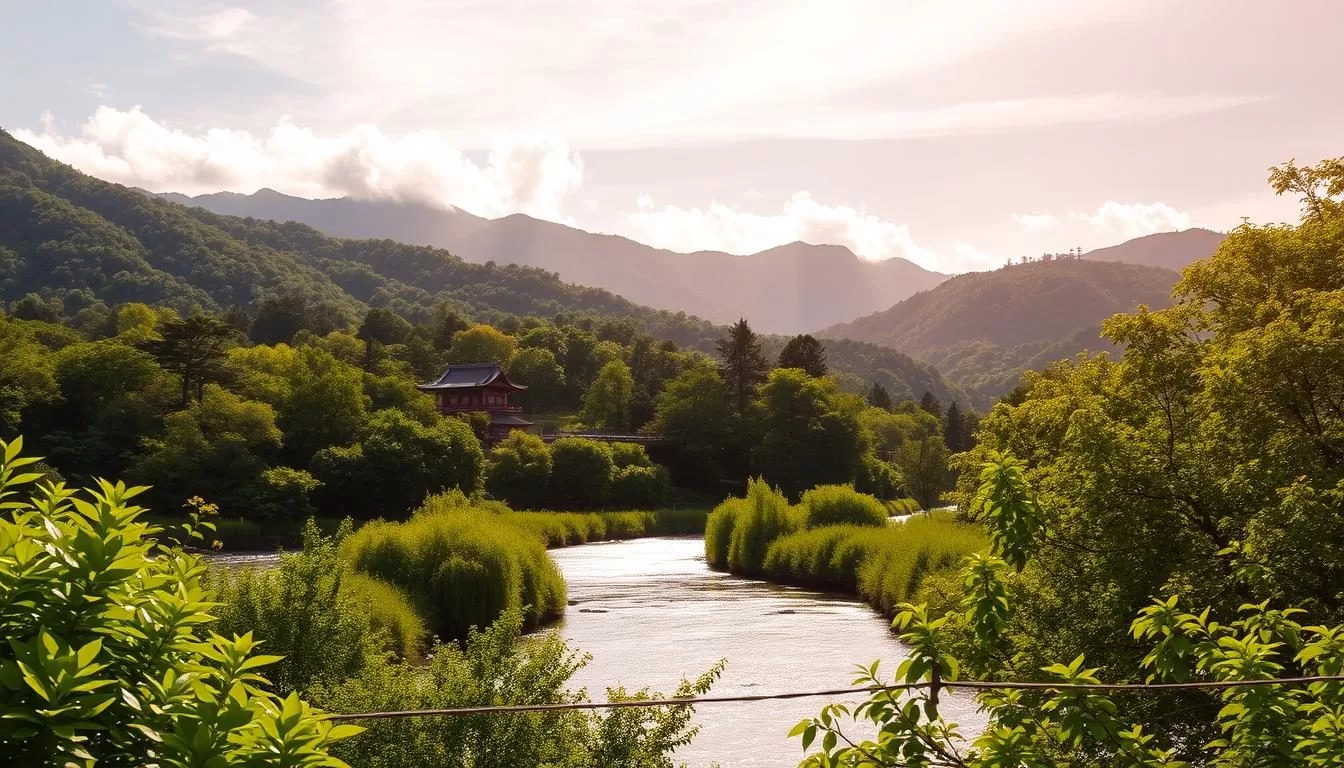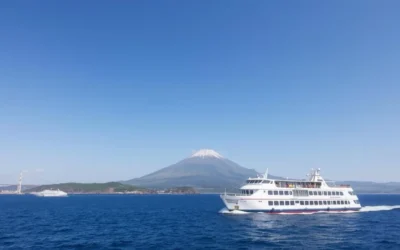✓ Accommodations✓ Flights✓ Rental Cars
Planning a trip to Wakayama Prefecture requires more than just choosing a destination; it’s about selecting the right time to experience its spiritual and natural wonders.
Nestled on Japan’s Kii Peninsula, this region boasts ancient temples, sacred pilgrimage trails, and breathtaking landscapes. The unique geography creates distinct weather patterns throughout the year, significantly impacting your travel experience.
Whether you’re drawn to the beauty of cherry blossoms, the tranquility of winter hot springs, or the vibrant colors of autumn foliage, understanding the season and choosing the optimal month for your visit is crucial.
As you prepare for your journey, this guide will help you navigate Wakayama’s diverse climate, ensuring that your trip is nothing short of extraordinary.
Discovering Wakayama Prefecture: Japan’s Spiritual Heartland
As Japan’s spiritual heartland, Wakayama Prefecture offers a unique blend of cultural significance and breathtaking natural scenery. You are about to embark on a journey to a place where ancient traditions and stunning landscapes converge.
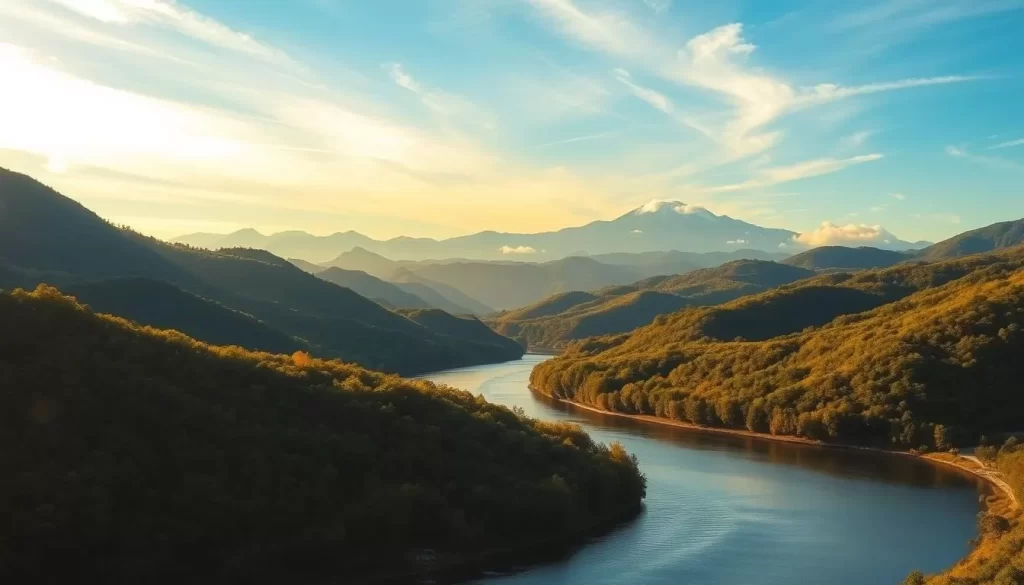
Geographic Location and Landscape
Wakayama Prefecture is situated on the Kii Peninsula, where the mountains meet the ocean, creating diverse microclimates throughout the region. This unique geography has given rise to a landscape of extraordinary nature and beauty, from dense forests to dramatic coastlines. You will discover a region that is as varied as it is visually stunning.
Cultural Significance and Heritage
Wakayama is deeply rooted in Japan’s spiritual heritage, being home to sacred sites like Koyasan and the Kumano Kodo pilgrimage trail. As a center for Japanese spirituality, Wakayama has attracted visitors and pilgrims for over a millennium, offering a rich cultural experience. The region’s heritage as a spiritual center has preserved traditional practices that you can still enjoy today.
Why Weather Matters When Visiting Wakayama
The mountainous terrain and coastal areas of Wakayama create a complex weather pattern that can significantly impact your visit. Certain attractions and hiking trails, such as the Kumano Kodo pilgrimage trails, are heavily dependent on favorable weather conditions. Understanding the local climate is crucial for planning your trip to this beautiful part of the country.
Wakayama’s Climate: A Year-Round Overview
As you plan your trip to Wakayama, Japan, gaining insights into its year-round climate will enhance your travel experience. Wakayama Prefecture experiences a temperate climate with four distinct seasons, each offering unique attractions and activities.
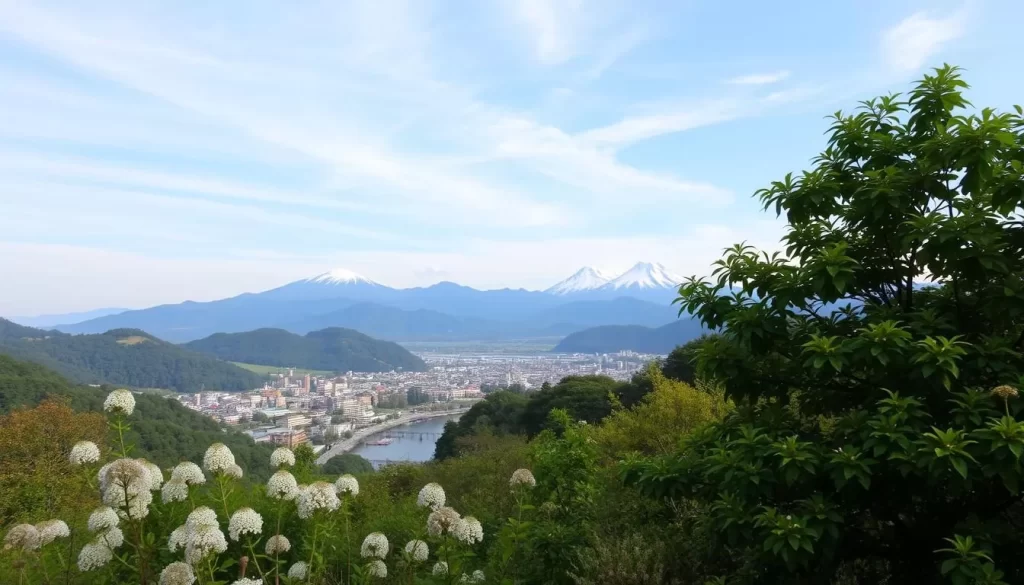
Temperature Patterns Throughout the Year
Wakayama’s temperature varies significantly throughout the year. Winters are generally mild, especially in coastal areas where snow is rare. In contrast, summers are hot and humid, particularly in July and August when temperatures soar. Spring and autumn offer mild temperatures, making them ideal for outdoor activities.
Precipitation and Humidity Levels
The prefecture experiences a significant rainy season, known as tsuyu, which typically occurs from June to mid-July. During this period, the weather can be overcast and dreary, with occasional heavy rainfall. Humidity levels are high during the summer month of July, making it feel hotter than the actual temperature. Understanding these precipitation patterns will help you plan your visit accordingly.
How Wakayama’s Weather Compares to Other Japanese Regions
Wakayama’s weather is distinct from other Japanese regions due to its geography. The prefecture’s mountainous terrain contributes to higher rainfall compared to other areas. While winters are milder than in northern Japan, the region experiences a unique microclimate, with varying weather conditions between coastal and inland areas. Thanks to its diverse geography, Wakayama offers a range of climates and experiences throughout the year and in different month.
Spring in Wakayama (March-May): Cherry Blossoms and Mild Weather
Spring in Wakayama is a season of renewal, marked by mild weather and breathtaking natural beauty. As the prefecture awakens from its winter slumber, the landscape transforms into a vibrant tapestry of colors, offering a unique experience each month.
Early Spring Awakening
In March, the first signs of spring become apparent with the blossoming of early flowering plants and trees, such as plum trees. The weather starts to get noticeably milder, making it an ideal time to explore Wakayama’s cultural and natural landmarks. You can enjoy the early spring views before the peak tourist season.
Cherry Blossom Season
April is renowned for its iconic cherry blossom season. Wakayama’s cherry blossoms create spectacular views along the Kumano Kodo trails and around sacred temples. The mild weather makes it perfect for hiking and exploring the prefecture’s natural and cultural heritage. You can experience the cherry blossom beauty in various parts of Wakayama.
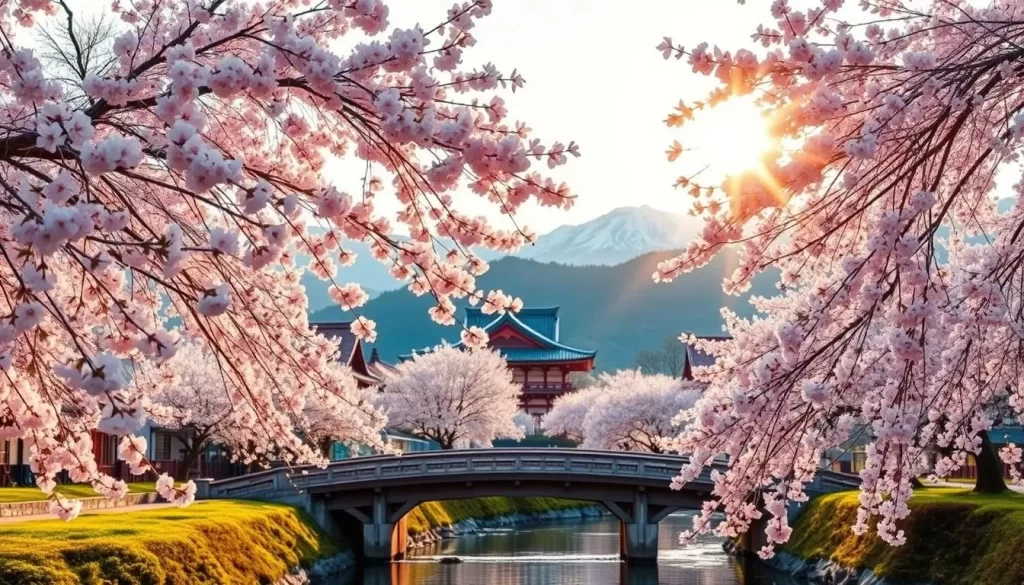
Perfect Hiking Weather
May brings comfortable temperatures, reduced humidity, and lush greenery, making it an ideal month for hiking the famous pilgrimage trails. The trails offer stunning views of Wakayama’s natural beauty, and the relatively uncrowded tourist spots allow for a more serene experience. You can enjoy hiking in perfect weather conditions.
Throughout the spring months, Wakayama hosts various festivals and events that enhance your cultural experience. From traditional celebrations to modern interpretations, these events offer a deeper insight into the prefecture’s rich heritage. You’ll discover why spring is considered one of the best times to visit Wakayama.
Summer in Wakayama (June-August): Spiritual Journeys and Natural Retreats
As summer unfolds in Wakayama, the prefecture transforms into a haven for those seeking spiritual journeys and natural retreats. This season, spanning across June, July, and August, brings a unique charm to the region, with each month offering distinct experiences.
June: Pre-Rainy Season Activities
In June, Wakayama is on the cusp of the rainy season, offering a serene atmosphere before the rains arrive. It’s an ideal time to visit spiritual sites like Koyasan, where the misty mountains create a mystical ambiance. You can enjoy hot spring resorts and wooded temple mountains, making it an attractive period for those seeking a tranquil experience.
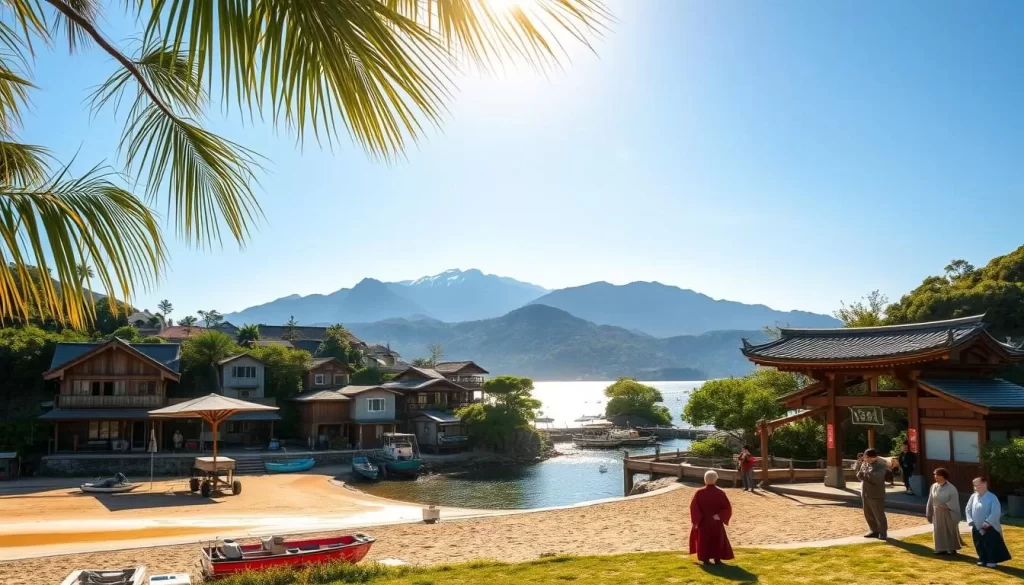
July: Navigating the Post-Rainy Season
July marks the end of the rainy season in Wakayama, ushering in hot and humid weather. Despite the climate, July is an excellent month to visit Wakayama’s coastal areas and indulge in the prefecture’s famous hot springs. The weather may be challenging, but the natural beauty and spiritual sites remain accessible and rewarding.
August: Festivals and Coastal Escapes
August in Wakayama is characterized by hot and humid weather, but it’s also the month of vibrant festivals. Numerous local matsuri take place, featuring traditional music, dance, food, and spectacular fireworks displays. For those seeking respite from the heat, Wakayama’s coastal areas, such as Shirahama Beach, offer a paradise-like escape, making August a great time to experience the prefecture’s diverse attractions.
Throughout the summer, Wakayama offers a range of experiences, from spiritual journeys to natural retreats. Whether you’re interested in exploring the prefecture’s cultural heritage or simply relaxing in its natural beauty, summer is a great time to visit.
Autumn in Wakayama (September-November): Fall Foliage and Harvest Season
Wakayama’s autumn season, spanning from September to November, offers a unique blend of natural beauty and cultural experiences. As the summer heat fades, the region transforms into a kaleidoscope of autumn colors, making it an ideal time for hiking, sightseeing, and immersing oneself in local culture.
September: Post-Typhoon Season Clarity
September marks the end of the typhoon season, which often brings much-needed rain to the region. While typhoons can cause disruptions, they are typically followed by clearer skies and more comfortable temperatures, making the latter part of September a great time to visit. The weather is generally mild, with average highs around 26°C (79°F), creating perfect conditions for outdoor activities.
October: Fall Colors and Comfortable Temperatures
October is considered one of the most pleasant months in Wakayama, with warm but not hot weather and significantly lower humidity. The fall foliage begins to peak, especially in the higher elevations and northern regions. This is an excellent time for hiking and exploring the region’s natural beauty, including the sacred sites along the Kumano Kodo pilgrimage trail.
November: Late Autumn Tranquility
November brings a serene atmosphere to Wakayama, with the autumn foliage reaching its peak in many areas. The weather remains relatively dry and mild, with average temperatures ranging from 10°C to 18°C (50°F to 64°F). This makes it an ideal time for a peaceful retreat, whether you’re exploring the temples of Koyasan or enjoying the local harvest festivals.
Here’s a summary of what to expect during the autumn months in Wakayama:
| Month | Weather | Activities |
|---|---|---|
| September | Mild temperatures, clearer skies post-typhoon season | Outdoor activities, sightseeing |
| October | Comfortable temperatures, low humidity, fall foliage | Hiking, exploring natural beauty, visiting sacred sites |
| November | Dry and mild weather, peak autumn foliage | Peaceful retreats, harvest festivals, temple visits |
Autumn in Wakayama is a time of transition, offering a mix of natural beauty, cultural richness, and serene landscapes. Whether you’re drawn to the vibrant fall colors, the spiritual atmosphere of sacred sites, or the local harvest festivals, Wakayama has something to offer every kind of traveler during the autumn month.
Winter in Wakayama (December-February): Hot Springs and Peaceful Retreats
As you explore Wakayama Prefecture in the winter, you’ll discover a serene landscape that offers a tranquil escape from the bustling tourist crowds. The prefecture transforms into a peaceful retreat, with its natural hot springs, spiritual sites, and picturesque winter scenery.
December: Early Winter Atmosphere
December brings an early winter ambiance to Wakayama, with clear, crisp days and occasional light snow creating a serene environment. The generally dry weather conditions make it a good month for traveling, despite the relatively short days and barren vegetation.
January: Hot Spring Season
January is considered the prime hot spring season in Wakayama. Soaking in natural onsen amid winter landscapes becomes a quintessential Japanese experience. The sunny and dry weather, combined with fewer crowds at sightseeing spots, makes January an ideal time to visit.
February: Winter Pilgrimage Experiences
February continues the trend of sunny and dry weather, with sightseeing spots remaining less crowded. This month offers a unique opportunity for winter pilgrimages along the Kumano Kodo, where the trails take on a mystical quality.
The contrast between Wakayama’s coastal areas, which remain relatively mild, and its mountainous regions, where snow can create breathtaking winter scenery, adds to the prefecture’s charm. For a winter travel experience in Wakayama, consider packing appropriately for the season, enjoying seasonal specialties, and participating in traditional winter events to enhance your cultural experience.
| Month | Weather Conditions | Activities |
|---|---|---|
| December | Generally dry, occasional light snow | Explore spiritual sites, enjoy early winter ambiance |
| January | Sunny and dry | Hot spring experiences, visit less crowded sightseeing spots |
| February | Sunny and dry | Winter pilgrimages along Kumano Kodo, enjoy serene landscapes |
Top Attractions in Wakayama by Season
Wakayama’s attractions transform with the seasons, offering unique experiences throughout the year. Whether you’re visiting in the spring, summer, autumn, or winter, each season brings its own charm to this spiritually rich region of Japan.
Kumano Kodo Pilgrimage Trail: Best Hiking Months
The Kumano Kodo pilgrimage trail, a UNESCO World Heritage site, is best hiked during the spring (April-May) and autumn (October-November). These periods offer the most comfortable temperatures and stunning views, making your hiking experience even more enjoyable. Summer is also a great time to hike, but be prepared for changing weather conditions and potential rain when walking through the forests.
Koyasan: Optimal Times for Spiritual Retreats
Koyasan, the heart of Shingon Buddhism, offers a unique spiritual experience throughout the year. Summer brings lush greenery, while autumn delivers fiery maple leaves. Winter creates a mystical snowy landscape, and spring showcases delicate blossoms. Each season provides a distinct atmosphere for your spiritual retreat.
Nachi Waterfall and Seiganto-ji Temple: Seasonal Views
Nachi Waterfall, Japan’s tallest waterfall, and the iconic Seiganto-ji Temple are breathtaking throughout the year. Summer brings a powerful water flow, while winter occasionally creates ice formations around the waterfall. The temple’s vermilion color stands out against the changing seasonal backdrop, making it a photographer’s delight.
Shirahama Beach: Prime Beach Season
Shirahama Beach, one of Japan’s most beautiful white sand beaches, is best enjoyed from late June through September. During this period, you can enjoy swimming, sunbathing, and various water sports. The warm summer months make it an ideal time for beach activities.
By understanding how each attraction changes with the seasons, you can plan your itinerary to make the most of your visit to Wakayama. Whether you’re interested in hiking, spiritual retreats, or simply enjoying the beach, Wakayama has something to offer in every season.
Practical Travel Tips for Weather-Savvy Visitors
Whether you’re hiking the Kumano Kodo or relaxing on Shirahama Beach, being prepared for Wakayama’s weather is vital. Understanding the local climate will help you make the most of your travel plans.
What to Pack for Each Season
Packing the right gear is essential for a comfortable trip. For summer months, bring lightweight, breathable clothing. In spring and autumn, layering options are key due to variable temperatures. Don’t forget waterproof gear for the rainy season and sturdy shoes for hiking trails. If you’re visiting in winter, be prepared for potential snow in mountainous areas.
Transportation Considerations During Different Weather Conditions
Be aware of potential weather-related delays during typhoon season (peaking in August and September) and winter snow. Monitor local weather forecasts using reliable Japanese weather apps to stay informed. This will help you plan your travel itinerary and make necessary adjustments to avoid disruptions.
Conclusion: The Ideal Months for Your Wakayama Adventure
The ideal time to visit Wakayama is influenced by your interests, whether you’re drawn to spring cherry blossoms or autumn foliage. For first-time visitors, spring (April-May) is potentially the best time, offering a balance of comfortable weather, natural beauty, and cultural experiences.
Alternatively, autumn (October-November) provides another prime window, with spectacular fall colors, pleasant temperatures, and fewer crowds. If you’re a beach lover or enjoy festivals, the summer months can be ideal despite the heat and humidity. For those interested in a more serene experience, winter presents a unique opportunity to enjoy Wakayama’s spiritual side, particularly its hot springs, in a peaceful setting.
Ultimately, each season in Wakayama offers its own special charm. By choosing the best time that aligns with your personal interests and weather preferences, you can have a truly memorable trip.
The above is subject to change.
Check back often to TRAVEL.COM for the latest travel tips and deals.
